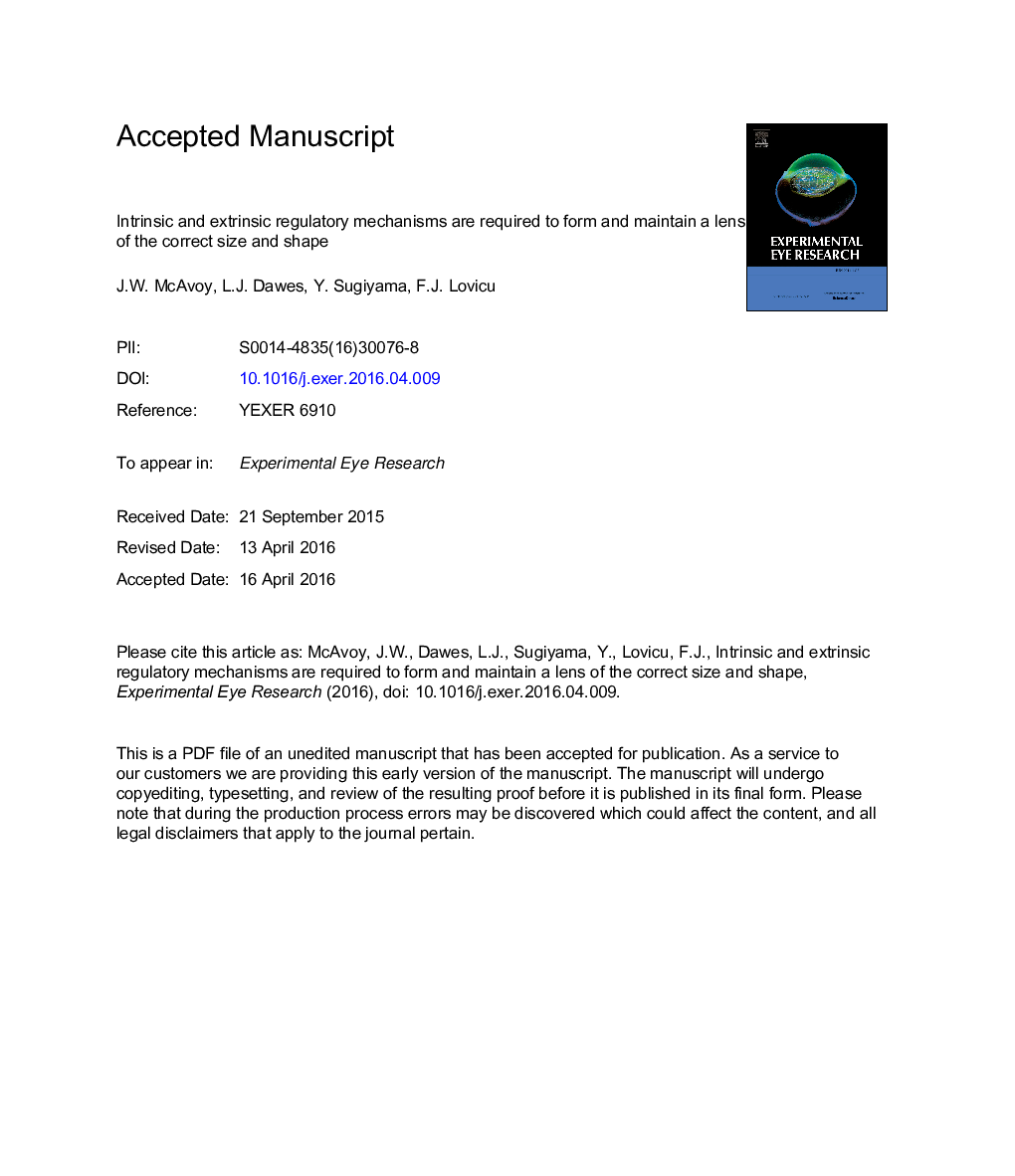| Article ID | Journal | Published Year | Pages | File Type |
|---|---|---|---|---|
| 5704154 | Experimental Eye Research | 2017 | 15 Pages |
Abstract
Understanding how tissues and organs acquire and maintain an appropriate size and shape remains one of the most challenging areas in developmental biology. The eye lens represents an excellent system to provide insights into regulatory mechanisms because in addition to its relative simplicity in cellular composition (being made up of only two forms of cells, epithelial and fiber cells), these cells must become organized to generate the precise spheroidal arrangement that delivers normal lens function. Epithelial and fiber cells also represent spatially distinct proliferation and differentiation compartments, respectively, and an ongoing balance between these domains must be tightly regulated so that the lens achieves and maintains appropriate dimensions during growth and ageing. Recent research indicates that reciprocal inductive interactions mediated by Wnt-Frizzled and Notch-Jagged signaling pathways are important for maintaining and organizing these compartments. The Hippo-Yap pathway has also been implicated in maintaining the epithelial progenitor compartment and regulating growth processes. Thus, whilst some molecules and mechanisms have been identified, further work in this important area is needed to provide a clearer understanding of how lens size and shape is regulated.
Related Topics
Life Sciences
Immunology and Microbiology
Immunology and Microbiology (General)
Authors
J.W. McAvoy, L.J. Dawes, Y. Sugiyama, F.J. Lovicu,
